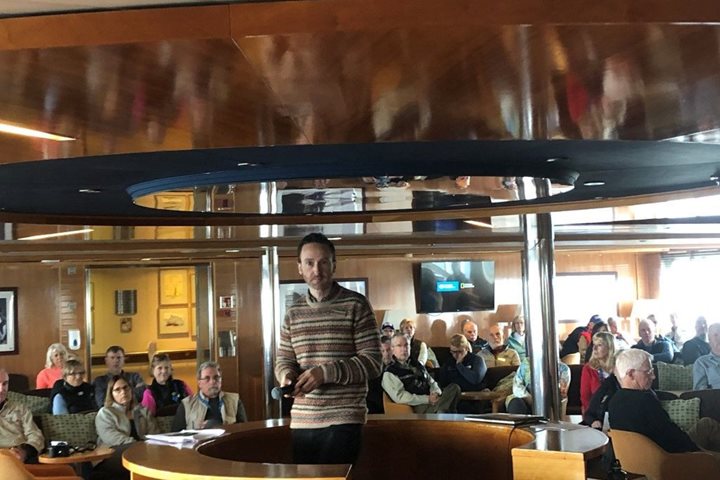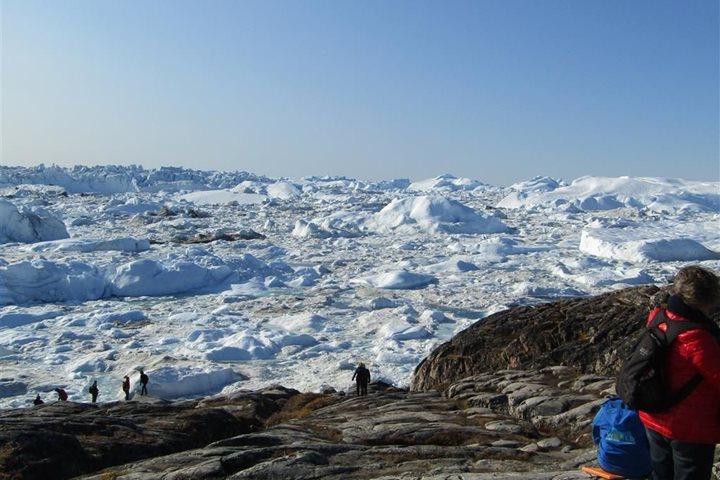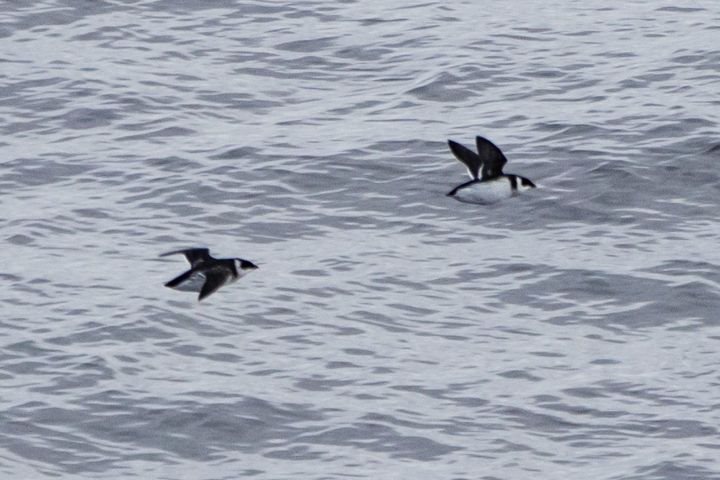Nobody - not even the most extravagant of brochure writers - could have anticipated the number of polar bears that we have encountered along the coast of Baffin Island. We are always watching from the bridge of National Geographic Explorer, with a friendly competition between crew and natural history staff to be the first to spot a white dot on the hillside. Sometimes the dot transforms into a white rock. We have a laugh at ourselves and move on. But at other times, the white dot is a sleeping polar bear. It rouses, and ambles over the tundra or clambers over the boulders, a picture of languid grace. It is preserving energy to see it through the summer and into the season of plenty, when sea ice forms and it can hunt for ringed seals.
This morning, however, our ice chart led us to a patch of residual sea ice, a remnant of last winter's frozen sea that has drifted south with the Labrador Current. Here we found a polar bear with the product of a successful hunt. It takes patience for a polar bear to hunt the seal, and it takes patience for our bridge officers to bring the ship, ever so slowly, into optimal viewing and photography range. It all came together this morning for a superb wildlife experience. Our bear seemed to be a young male, perhaps entering the prime of life (judging from the thick neck but with little scarring around the face that comes from battles with other males), and in good condition (judging from the well-rounded body.) Perhaps it had been drifting south with the ice. It had been feeding on the seal for some time. The layer of blubber is the first, and sometimes the only part of the seal to be consumed, and it was gone. The bear was sharing its kill with twelve or more glaucous gulls. It was well aware of us, but reluctant to abandon its kill.
We left the scene. On the shore of Padloping Island, even within sight of the patch of sea ice, we spotted a bear ... and then another, and then more. Seven polar bears were clearly visible. High on the hillside above us was a female with two large, yearling cubs, lounging near a patch of bright magenta dwarf fireweed. Why was she so far above potential feeding areas? We speculate that she was avoiding the male bears that are a risk to her young, but soon she will have to find a meal, for the cost of lactation to provide for the needs of her two large cubs is high.







